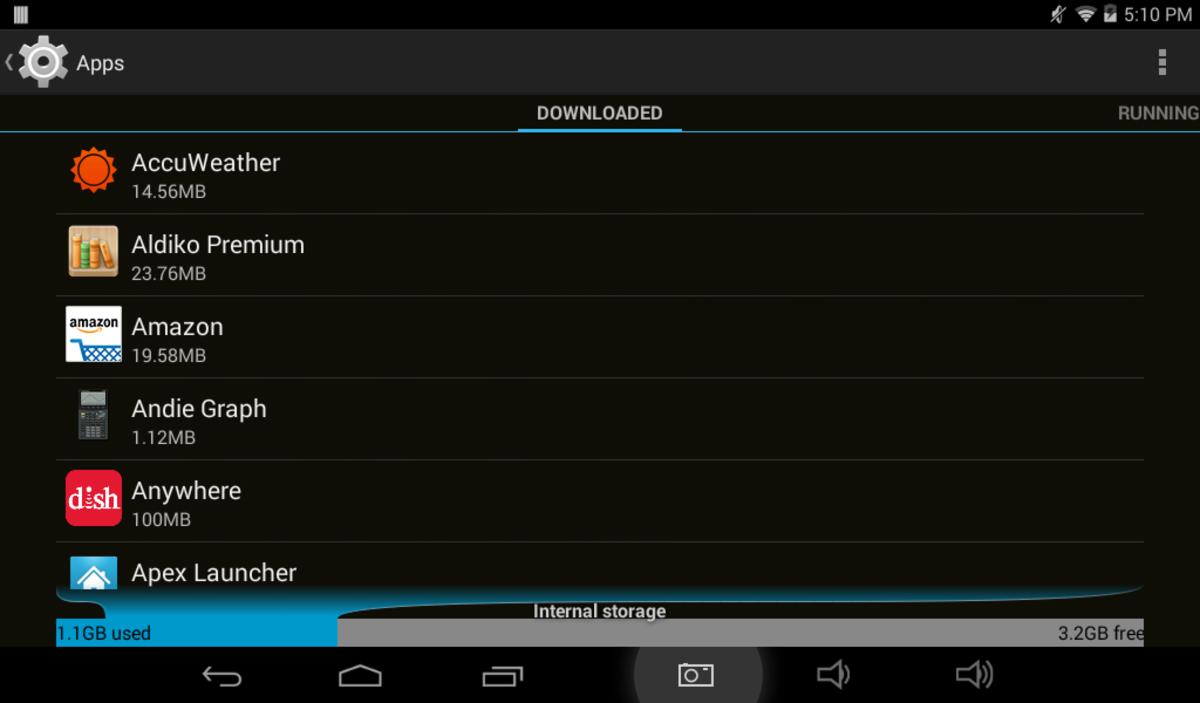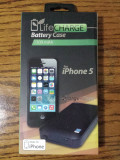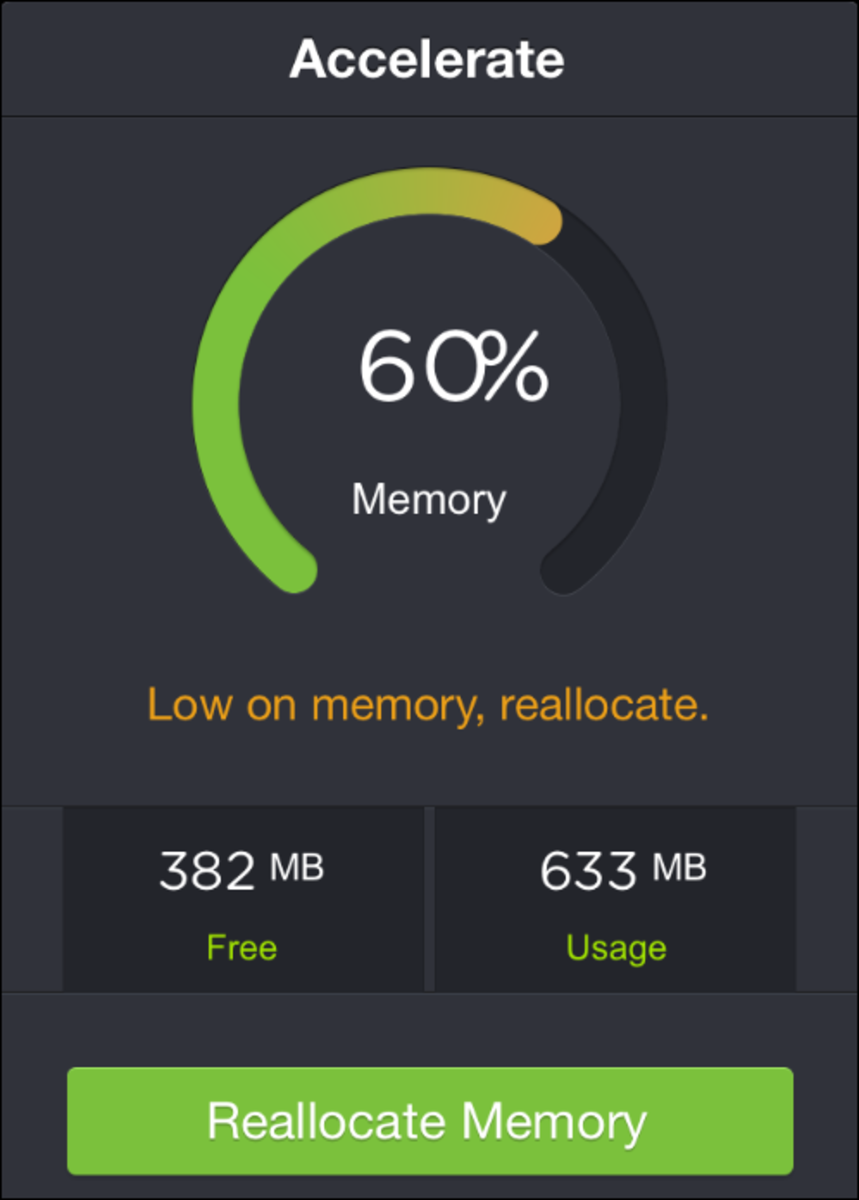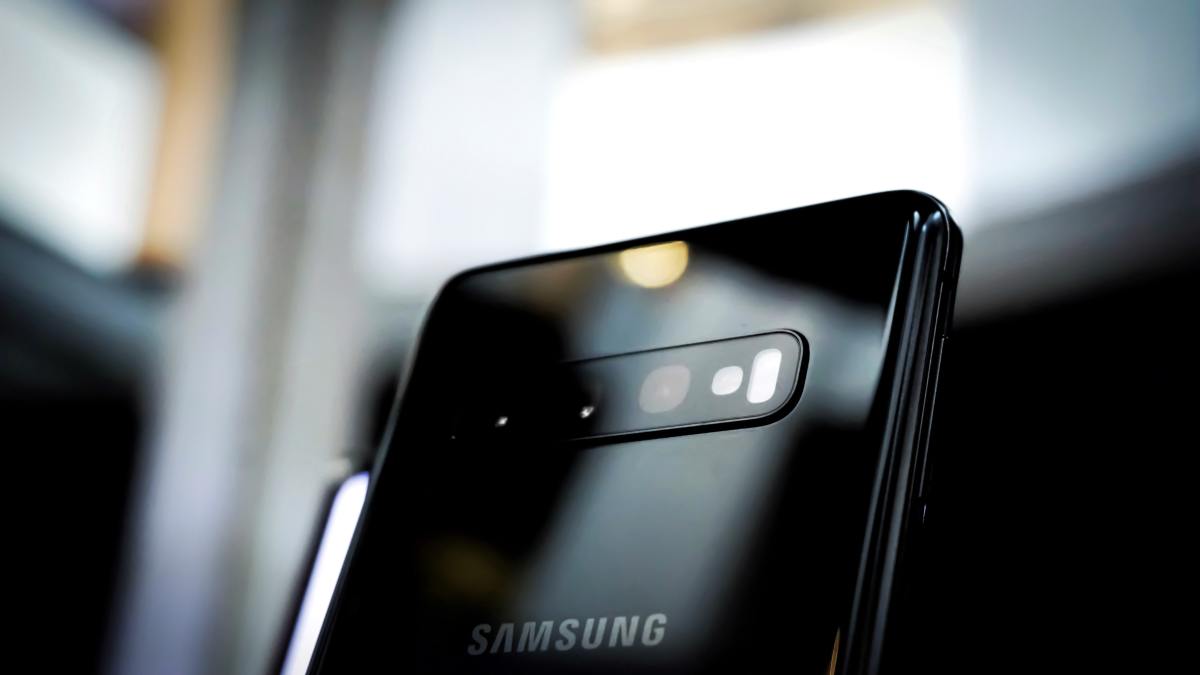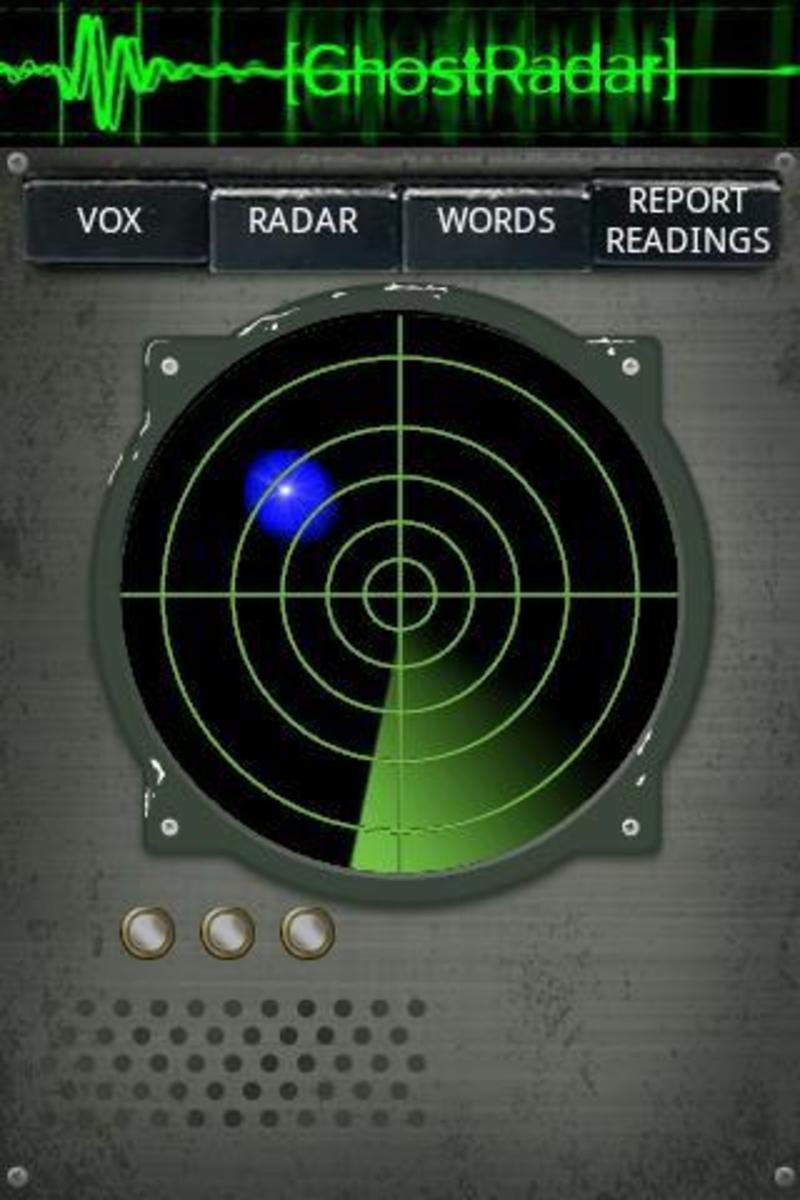Google Nexus 4 vs. Apple iPhone 5 - Which smartphone to buy? (Specs, Display, Design, Performance, Software, OS, Extras)
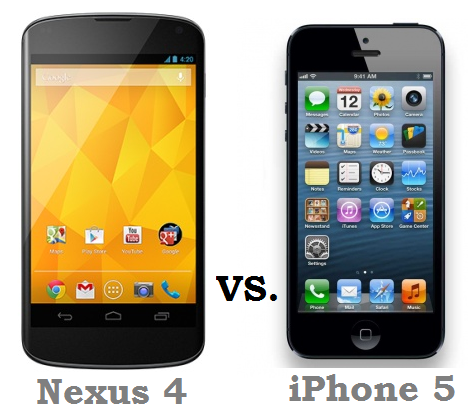
Google vs. Apple - a battle of giants
It's very clear that the two companies have very different approaches to their smartphone lines and with every new generation getting better and better, it's harder than ever to choose your next smartphone. So here we will compare two great choices - the new Android flagship by Google and LG as a hardware partner - the Nexus 4, which is the first smartphone to come running Android 4.2 (a new even better flavor of Jelly Bean) and the new Apple iPhone 5 that needs no introduction.
So on one side we have Apple who are still the market leaders that present the consumers with high-priced high-quality electronics. Their iPhone line is still the most popular and recognizable smartphone that has a reputation of a premium device providing a great user experience. On the other side we have Google who are trying to make their open-source mobile operating system Android the new boss in town and to do so, they have started to produce devices themselves. Google have worked very hard to make the new Android 4.2 as good as possible and are betting on great hardware at the lowest price possible without any profit margin. So Google in partnership with LG have come up with a great smartphone that could actually challenge all the other top-of-the-line devices - the Nexus 4. So let's see if it has what it takes to take on the Apple iPhone 5.
Technical Specifications (blod means better)
-
| Nexus 4
| iPhone 5
|
|---|---|---|
Manufacturer
| LG and Google
| Apple
|
OS
| Android 4.2 Jelly Bean
| iOS 6
|
Processor
| 1.5GHz Quad-Core Qualcomm Snapdragon S4 Pro
| 1.2GHz Dual-Core Apple A6
|
RAM
| 2GB
| 1GB
|
Display Size
| 4.7"
| 4.0"
|
Display Resolution
| 1280x768
| 1136 x 640
|
Pixel Density
| 320ppi
| 326ppi
|
Storage
| 8 / 16 GB
| 16 / 32 / 64 GB
|
Expandable Memory
| No
| No
|
Height
| 5.27 inches (133.9 mm)
| 4.87 inches (123.8 mm)
|
Width
| 2.7 inches (68.7 mm)
| 2.31 inches (58.6 mm)
|
Depth
| 0.35 inch (9.1 mm)
| 0.30 inch (7.6 mm)
|
Weight
| 4.9 ounces (139 grams)
| 3.95 ounces (112 grams)
|
Marin Camera
| 8MP
| 8MP
|
Front Camera
| 1.3MP
| 1.2MP
|
Battery
| 2,100mAH Li-polymer
| 1,418mAh Li-ion
|
Wireless Charging
| Yes
| No
|
Video Outputs
| HDMI
| Dock
|
NFC
| Yes
| No
|
Location / Orientation Sensors
| GPS, compass, accelerometer, gyroscope, ambient light sensor, proximity sensor, barometer
| A-GPS, GLONASS, compass, accelerometer, gyroscope, ambient light sensor, proximity sensor
|
Wi-Fi
| 802.11 b/g/n dual-band
| 802.11a/b/g/n Wi-Fi (802.11n 2.4GHz and 5GHz)
|
USB
| Standard Micro USB
| Proprietary "Lightning" connector
|
Release Date
| November 2012
| September 2012
|
Processing power and Specs
When we look at the technical specifications sheet, it's clear which device has more computing power and it's Google's LG Nexus 4. Apple has never put an emphasis on raw horse-power and tries to sell user experience rather than specs, but it's obvious that the Nexus 4 is going to be so much snappier. It has double the core numbers and a higher clock speed paired with double the RAM. It's simply the best possible specs right now and no matter what you do, you would have a very hard time squeezing better internal into a 2012 smartphone.
Processing Power Winner: LG Nexus 4 (by Google)
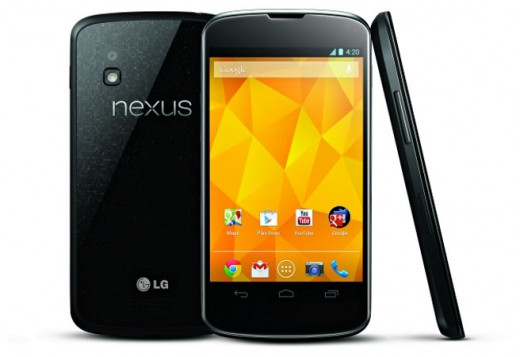
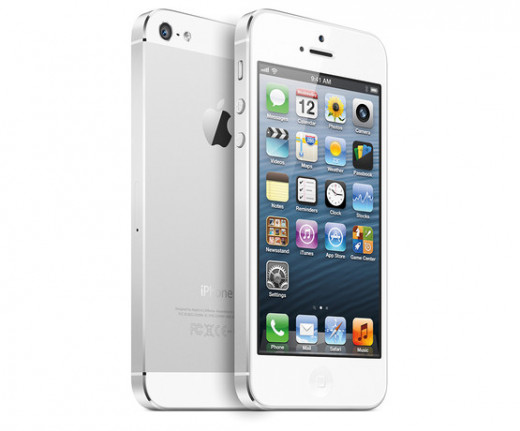
What do you think...
Which device has the better looks?
Design
There are a lot of consumers out there who chose their electronics not only based on their internals and specs, but also on the way they look. In this case this is something that is purely subjective and what we could mention is that both devices look and feel pretty stylish, but in the end, the iPhone might have the more premium vibe to it. On the other hand, the people that would appreciate the Nexus 4's ergonomic curves might feel that the iPhone 5 is boxy and boring. So I'm sure each of customer will know which smartphone looks more attractive to them.
Another important aspect of the design is the size and the LG Nexus 4 is a bit bigger and heavier than the Apple iPhone 5 which has both it's advantages and disadvantages. But in the end the size judgement also falls into the category of subjectivity.
Design Winner: subjective (so vote and comment)
Display
Now the display is one of the most important features of a smartphone because it houses all the interaction with the device and takes up most of its face. The first difference one will notice when looking at the devices is the fact that the Nexus 4 has the bigger display. Despite the fact that the iPhone 5 has a bigger screen than it's predecessors, it still hasn't reached the size of most of its competitors. This might be a good thing for some, but in the end, a bigger display means more real estate for interaction and for viewing content, so its simply more useful. The LG Nexus 4 by Google not only has a larger display, but it also has a higher resolution to provide more on it. The two devices have a very similar pixel density (with a tiny edge for the iPhone) and similar IPS technology. So the Nexus 4 is the obvious winner unless it's too big for you. In that case, the iPhone 5 will not be a disappointment by any means.
Display Winner: LG Nexus 4 (by Google)
Hardware
Ok, we talked about the computing power and the display, but there are a bunch of other things that could make or break a device in many people's books. So let's talk about the differences in the rest of the hardware.
The first important point to cover is the storage options which is a huge advantage for the iPhone 5 since it can come with internal storage of up to 64GB while the biggest option for the LG Nexus 4 is just 16GB (the smallest iPhone 5 storage option). While 16GB will be sufficient for many, some might be frustrated by not being able to purchase this great device at least with 32GB of internal memory. The storage matters are made worse by the lack of any expandable storage options on both smartphones.
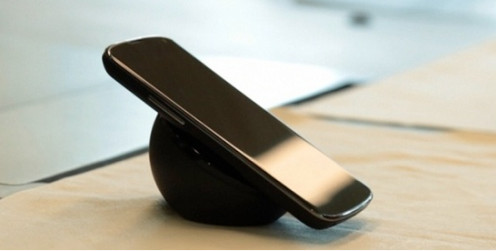
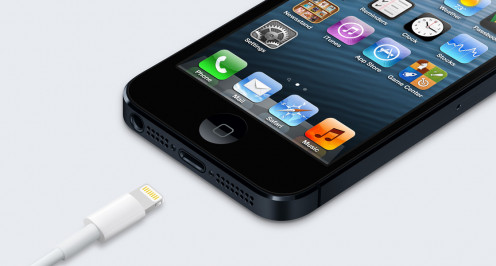
Another thing lacking on the more budget friendly LG Nexus 4 is LTE which might be a deal-breaker for high-speed data addicts. This, the addition of GLONASS, the slightly wider WiFi options on the iPhone 5 and a third noise cancelling microphone (while its Android competitor has "only" two) sum up the rest of its hardware advantages.
On the other hand the LG Nexus 4 has a few more tricks up it's own sleeves two. One of the great omissions on the iPhone 5 that is available on all of its competitors including this one is NFC. Additionally, Google's latest showcase device has significantly more battery power a barometer sensor. It also has cooler and more useful charging and output options. While the iPhone 5 relies solely on its proprietary "Lightning" connector, the LG Nexus 4 can be charged via a standard micro USB cable or wirelessly via a special dock and can provide video output via standard HDMI. So as expected, the latest Nexus smartphone is much more open than Apple's latest offering.
And last, but not least, if you are going to purchase your device unlocked, the LG Nexus 4 will be significantly cheaper with its 8GB version running at $299 and its 16GB version being sold at $349.
Still, if we have to declare a winner in this category, storage and download speed seem like the most important aspects.
Other Features Winner: Apple iPhone 5
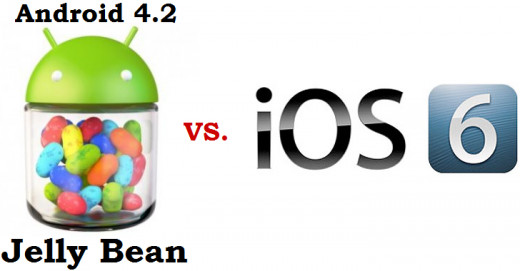
Operating System and Software
It's very clear that Google and Apple are locked in a duel of giants for mobile dominance. Apple is still perceived to have the higher ground, but it is actually having a bit of a hard time holding it with competitors like the Samsung Galaxy SIII and the HTC One X from the Android camp. But the Nexus 4 is going to make it so much harder. It's a battle between the iOS ecosystem powering the iPhone, iPad and the iPod Touch and the Android ecosystem already powering hundreds of devices from all kinds of manufacturers.
The Nexus 4 was built to showcase the latest version of Android - Android 4.2 Jelly Bean which is another step of optimization up from the previous iteration of Jelly Bean - Android 4.1. It is expanding on Androids best features and making it much faster and even easier to use. It's important to note that one key difference between iOS and Android is the approach in creating the user experience. While iOS is built to be easy to use, intuitive and pleasant, Android is built to provide the user as much control and flexibility as possible. It has widgets that in its latest version are not only present in its home screen, but also on its lock screen and all kinds of customization options and controls. This is great for a lot of users, but some might find it a bit more confusing or difficult to deal with. That's why Apple has always gone with a simpler system that relies on an abundance of apps that can turn the smartphone into anything you want, but that are easy to use, launch and understand. But with Jelly Bean Android has managed to retain and expand its power while not becoming a mess. In the end, it comes to personal taste, but the power users would feel much more at home with an Android device like the Nexus 4.
Google Nexus 4's Photo Sphere mode
So talking about apps, we should touch upon the software available. The attitude towards the pre-installed software is pretty much the same. Everything on the Nexus 4 seems more flexible, customizable and powerful than on the iPhone 5. With the latest version of its mobile operating system, Apple decided to do away with Google Maps and to built its own Maps app in house. It didn't work out and the quality of the software is clearly inferior to the application preloaded on the LG Nexus 4 (and any other Android device, even the outdated ones). Other telling comparison might be done with the camera apps on the two devices. While the iPhone 5 might be proud to finally provide panorama shots, the LG Nexus 4 provides full on 360-degree panoramas called Photo Shere that are so much more impressive. One of Apple's cool advantages of the past - Siri - has also lost a bit of its value with the inclusion of Google Voice Search in Android Jelly Bean, which is less conversational, but is great at providing information and answering naturally asked questions.
So in the end, Android is catching up with iOS at the things it wasn't as good as in the past, but is keeping its advantages. And despite the fact that this is almost as subjective as design, the scales are starting to tip in Android's favor, especially with the LG Nexus 4. Android 4.2 Jelly Bean simply has so much perks that simplicity doesn't seem to cut it anymore.
OS and Software Winner: LG Nexus 4 (by Google)
What do you think...
Which smartphone would suit you more?
Additional Resources
Final Verdict
The choice between the iPhone and the Android flagships has been a challenge lately with the advantage swinging to a different part of the court with every new device or OS update. The iPhone 5 is certainly going to remain a very successful smartphone and a lot of consumers are going to get it and be very happy with its functionality. But the improvements that Google have made to their operating systems simply cannot be denied. While in the past Android was the buggier of the two and couldn't provide the refined experience of iOS, the new Nexus 4 device is simply in a new league and can finally deliver things that Apple aren't ready to. Pair this with the sheer processing powered packed into it and the low price when unlocked and you have a winner. Of course, its not a device without its shortcomings and its limited storage or lack of LTE might be a deal-breaker for many, but seems it has more pros than cons. Everybody should choose the smartphone to buy based on their personal preferences and getting some hands on time with each model might still be the best way to make the informed choice for yourself. Nevertheless, we have a winner.

